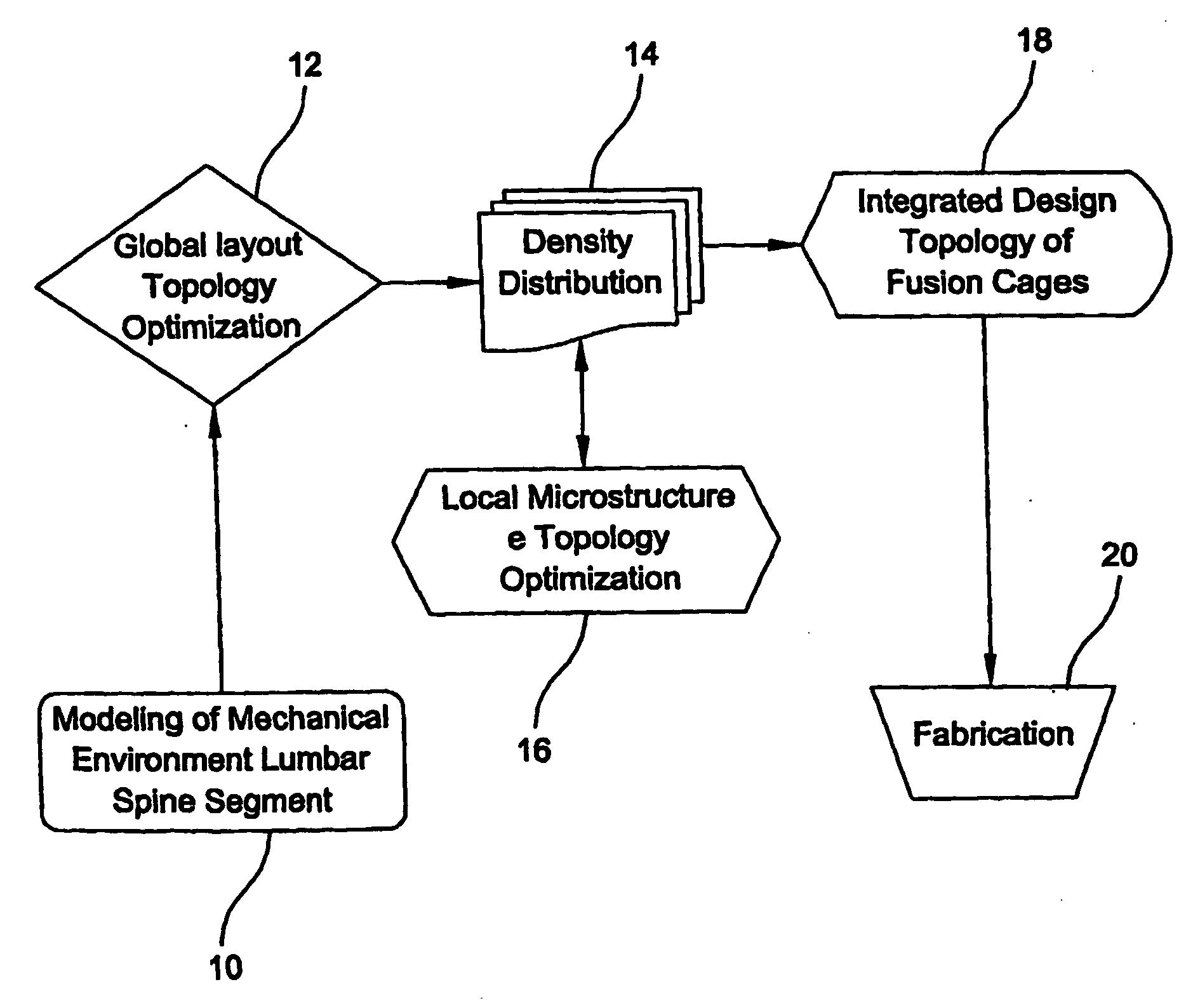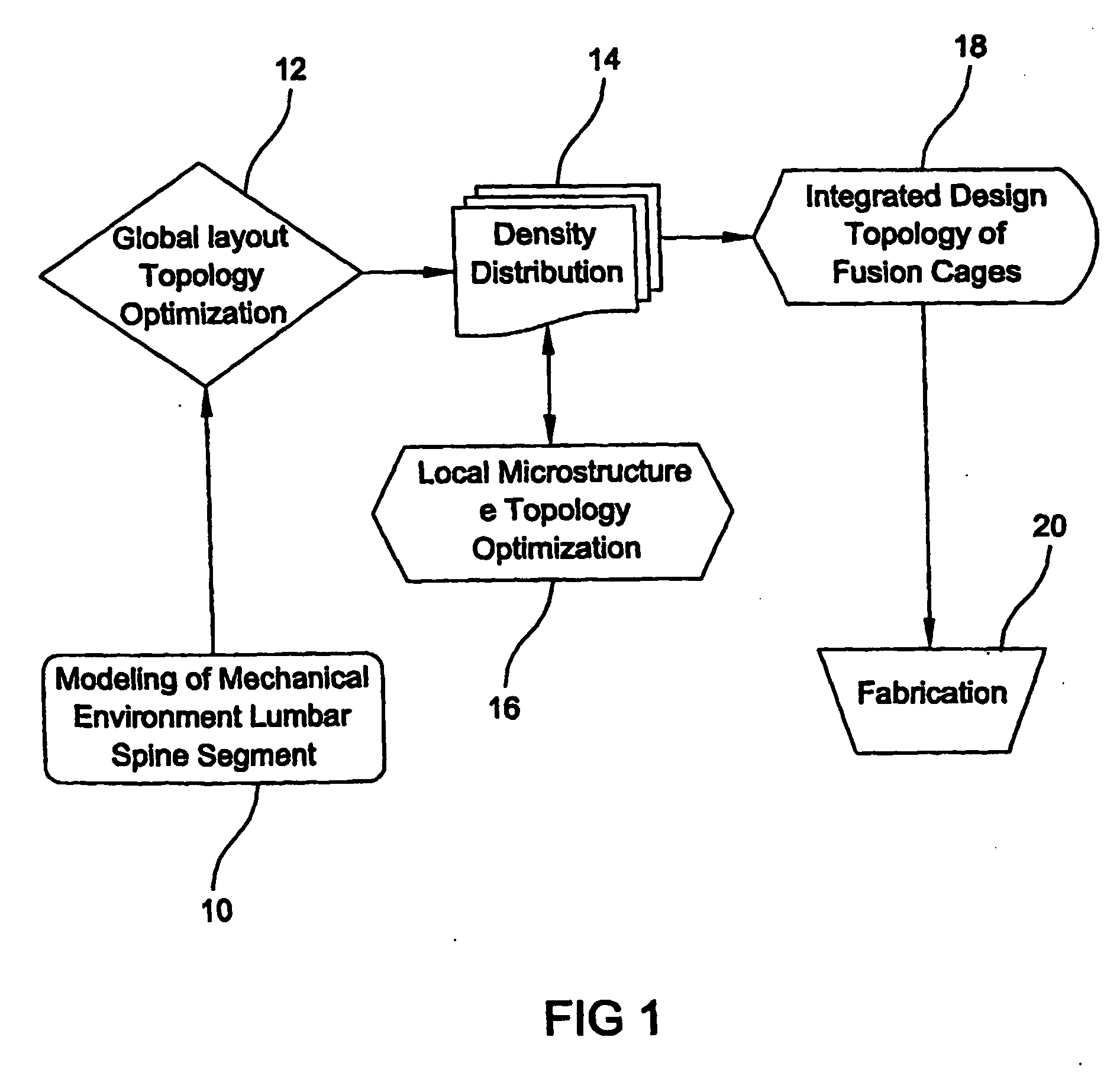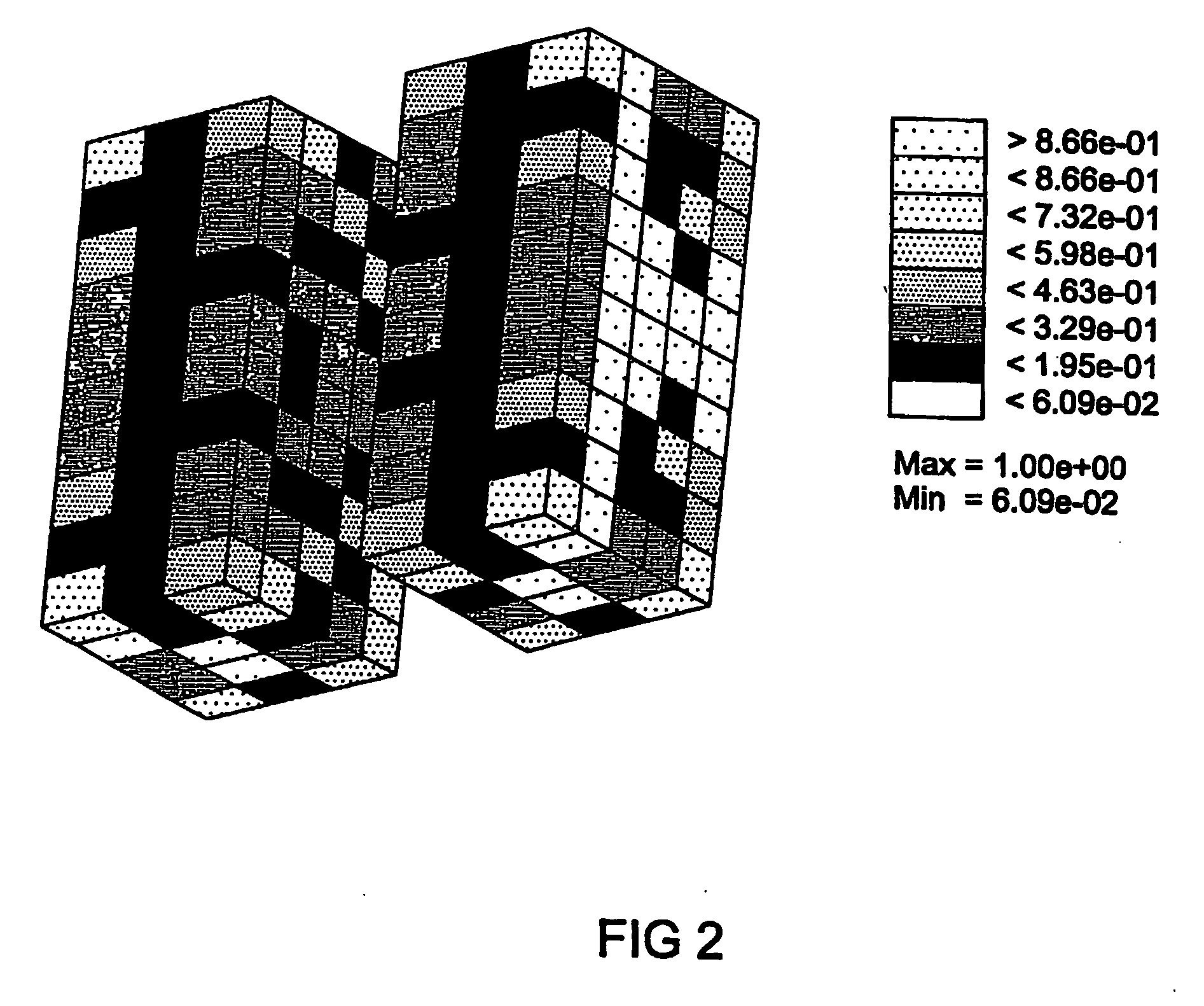Integrated global layout and local microstructure topology optimization approach for spinal cage design and fabrication
a spinal cage and microstructure topology technology, applied in the direction of instruments, prostheses, joint implants, etc., can solve the problems of increasing the risk of bone resorption, increasing the largest pore size, and sacrifice the stiffness of the cage, so as to achieve sufficient mechanical strain and sufficient stability
- Summary
- Abstract
- Description
- Claims
- Application Information
AI Technical Summary
Benefits of technology
Problems solved by technology
Method used
Image
Examples
Embodiment Construction
[0023] The following description of the preferred embodiments is merely exemplary in nature and is in no way intended to limit the invention, its application, or uses.
[0024] In accordance with the teachings of the present invention, a method of designing an interbody fusion cage is provided. The cage is designed to provide mechanical support, and scaffolding for tissue ingrowth and biofactor delivery to facilitate arthrodesis (spine fusion). The new design approach balances the conflicting requirements of providing stability for support, compliance to avoid stress shielding, and porosity for biofactor delivery.
[0025] As one skilled in the art may appreciate, stability requires a dense material while compliance and biofactor delivery require great porosity. The present invention employs an optimization approach to achieve a balanced design. Specifically, a material layout is created such that stability, compliance and porosity requirements are optimally balanced. Even more particul...
PUM
| Property | Measurement | Unit |
|---|---|---|
| porosity | aaaaa | aaaaa |
| porosity | aaaaa | aaaaa |
| displacements | aaaaa | aaaaa |
Abstract
Description
Claims
Application Information
 Login to View More
Login to View More - R&D
- Intellectual Property
- Life Sciences
- Materials
- Tech Scout
- Unparalleled Data Quality
- Higher Quality Content
- 60% Fewer Hallucinations
Browse by: Latest US Patents, China's latest patents, Technical Efficacy Thesaurus, Application Domain, Technology Topic, Popular Technical Reports.
© 2025 PatSnap. All rights reserved.Legal|Privacy policy|Modern Slavery Act Transparency Statement|Sitemap|About US| Contact US: help@patsnap.com



